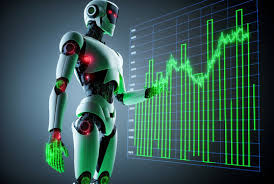In the fast-paced world of foreign exchange (forex) trading, where fortunes can be made or lost in seconds, traders are constantly seeking ways to gain an edge. One such avenue is the use of forex robots, also known as expert advisors (EAs). These forex robot systems have gained popularity in recent years for their ability to execute trades with speed and precision, often without the need for human intervention. But what exactly are forex robots, and how do they work?
Forex robots are computer programs designed to analyze the forex market, identify trading opportunities, and execute trades on behalf of the user. They are built on algorithms and mathematical models that aim to capitalize on market inefficiencies and trends. These robots can operate 24/7, tirelessly scanning the market for potential setups and executing trades according to pre-defined parameters.
The appeal of forex robots lies in their potential to remove human emotion and error from trading decisions. Emotions such as fear and greed can often cloud judgment and lead to irrational trading behavior. By automating the trading process, forex robots aim to maintain discipline and consistency in executing trading strategies.
There are various types of forex robots available in the market, ranging from simple scripts to sophisticated systems with advanced features. Some robots are designed to scalp small profits from quick market movements, while others employ trend-following or breakout strategies to capture larger moves. Additionally, some robots incorporate artificial intelligence and machine learning techniques to adapt to changing market conditions and improve performance over time.
One of the key advantages of forex robots is their ability to execute trades at high speeds. In the forex market, where volatility can spike unexpectedly, having a system that can react swiftly to price changes can be advantageous. Forex robots can execute trades within milliseconds, ensuring that traders can capitalize on fleeting opportunities and avoid slippage.
Furthermore, forex robots can operate across multiple currency pairs simultaneously, allowing traders to diversify their trading strategies and spread risk. This diversification can help mitigate losses during periods of adverse market conditions and improve overall portfolio performance.
However, it’s essential to recognize that forex robots are not a guaranteed path to success. Like any trading strategy, they come with risks and limitations. Market conditions can change rapidly, rendering pre-programmed strategies ineffective. Moreover, forex robots are only as good as the algorithms upon which they are built. A poorly designed or outdated robot may produce subpar results or even incur losses.
Additionally, while forex robots can automate the execution of trades, they cannot replace the human element entirely. Traders still need to monitor their robots’ performance, adjust parameters as needed, and intervene in exceptional circumstances. Furthermore, understanding the fundamentals of the forex market and having a solid grasp of trading principles remain essential for long-term success.
In conclusion, forex robots offer a powerful tool for traders looking to automate their trading strategies and capitalize on market opportunities. With their ability to operate 24/7, execute trades at high speeds, and diversify across multiple currency pairs, they have become a valuable asset in the arsenal of many forex traders. However, it’s crucial to approach forex robots with caution, understanding their limitations and actively managing their performance. When used wisely, forex robots can complement a trader’s skills and potentially enhance their profitability in the dynamic world of forex trading.
